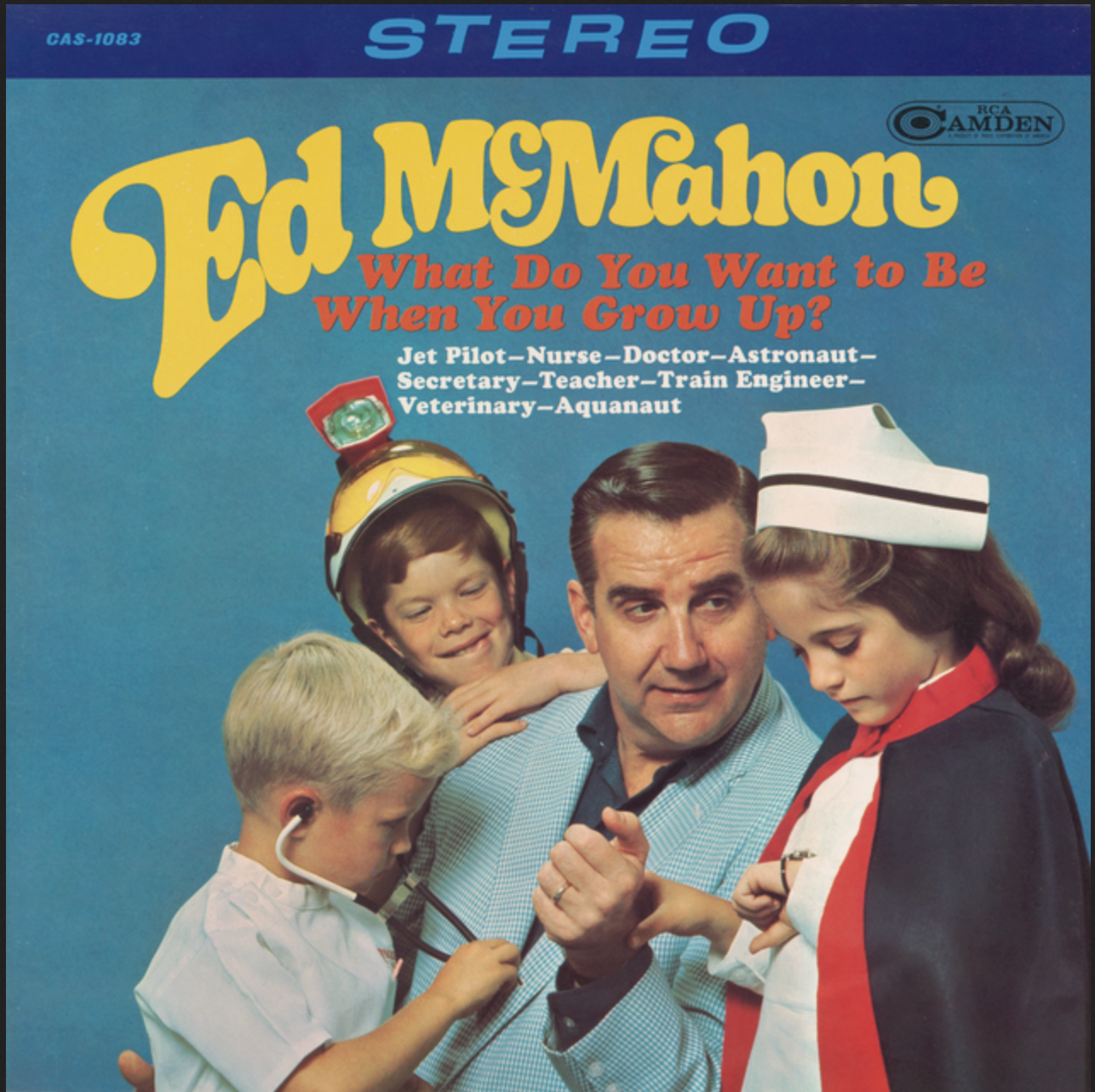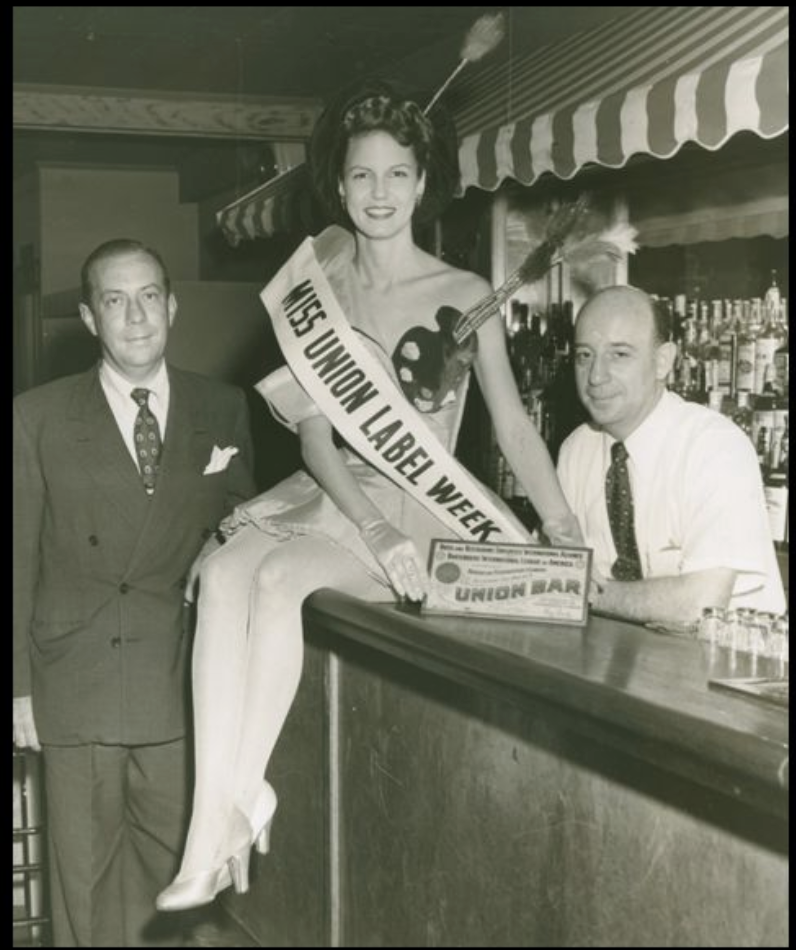September 2023
September 5, 2023
Phil A. O’Fish
In the 1970s, McDonalds introduced many of its well-known corporate mascots such as the Hamburgerlar, Mayor McCheese, and Ronald McDonald. It also debuted Phil A. O'Fish who, for some reason, disappeared less than a year after being introduced.I wonder what Phil did wrong to get dropped so quickly.
More info: Smithsonian Magazine


Washington Court House Record-Herald - Mar 18, 1976

Posted By: Alex - Tue Sep 05, 2023 -
Comments (1)
Category: Corporate Mascots, Icons and Spokesbeings, 1970s
Disco Body Shaper
Posted By: Paul - Tue Sep 05, 2023 -
Comments (3)
Category: Exercise and Fitness, Advertising, 1970s
September 4, 2023
Happy Labor Day 2023!
I'd love to know if the umbrellas were practical or symbolic.
Posted By: Paul - Mon Sep 04, 2023 -
Comments (4)
Category: Holidays, Tradesmen, Manual Laborers, and Skilled Workers
Whole brain not needed for handling money
Mention to any friends who are bankers or accountants that science has shown they could have a frontal lobotomy and still do their job, and see how they react.
Click to enlarge
Posted By: Alex - Mon Sep 04, 2023 -
Comments (0)
Category: Money, Experiments, Psychology, 1930s
September 3, 2023
Death by parmesan
Giacomo Chiapparini recently died when a shelf broke in a warehouse, causing thousands of wheels of "a Parmesan-style cheese" to fall down on top of him. The collapse reportedly sounded "like thunder." It took 12 hours to find his body.More info: BBC News
Posted By: Alex - Sun Sep 03, 2023 -
Comments (1)
Category: Death
Ed McMahon’s WHAT DO YOU WANT TO BE WHEN YOU GROW UP?
Ed sings!
Posted By: Paul - Sun Sep 03, 2023 -
Comments (0)
Category: Jobs and Occupations, Television, Children, 1960s, Comedians
September 2, 2023
Stained-Glass Bra
Would one wear this to church?
Jackson Sun - Jun 27, 1969

Indianapolis Star - July 1, 1969
Posted By: Alex - Sat Sep 02, 2023 -
Comments (0)
Category: Fashion, Underwear, 1960s
Miss Union Label
I thought this was fitting for Labor Day Weekend!

Posted By: Paul - Sat Sep 02, 2023 -
Comments (0)
Category: Awards, Prizes, Competitions and Contests, Beauty, Ugliness and Other Aesthetic Issues, Tradesmen, Manual Laborers, and Skilled Workers, 1950s
September 1, 2023
Hitler Species
There are two species of insects named after Hitler. The mystery, however, might be why more creatures weren't named after Hitler by German scientists during the 1930s, as a way to curry favor with him. The answer, surprisingly, seems to be that requests were made, but Hitler would always ask for his name not to be used. (The insect researchers never asked for his permission). Text from The Art of Naming by Michael Ohl (2018 translation):To date, Anophthalmus hitleri has been found in but a handful of caves in Slovenia. Particularly after the media discovered and circulated the Hitler beetle story in 2000, interest in this species has been rekindled. A well-preserved specimen of Anophthalmus hitleri can fetch upward of 2,000 euros on the collectors' market; among the bidders, certainly some wish to add the Hitler beetle to their collection of Nazi memorabilia. . .
At least one other species has been named after Adolf Hitler: the fossil Roechlingia hitleri, which belongs to the Palaeodictyoptera, a group of primitive fossil insects. Roechlingia hitleri was described in 1934 by German geologist and paleontologist Paul Guthörl. . .
Extensive research has failed to turn up any other species named in honor of Hitler. This seems surprising, as this form of salute could have proven quite expedient to aspiring German scientists from about 1933 until 1945, at the latest...
The likeliest explanation is that when Hitler patronyms were planned, approval was sought in advance from the Führer (by way of the Reich Chancellery), whether out of respect or perhaps fear of potential consequences. In 1933, for instance, a rose breeder submitted a written request to the Reich Chancellery for permission to introduce to the international market one of his best rose varieties, bearing Hitler's name. Similarly, a nursery owner from Schleswig-Holstein hoped to name a "prized strawberry variety" the "Hitler strawberry," in honor of the Reich Chancellor. They already had a "Hindenburg" strawberry variety in their catalog, he added. In reply to both cases, Hans Heinrich Lammers, Chief of the Reich Chancellery, sent almost identical letters, in which the inquiring parties were informed that, "upon careful consideration, [the reich Chancellor] requests that a name in his honor most kindly not be used." . . .
Perhaps this fundamental rejection of honorary names is the reason that so few hitleris exist.

Anophthalmus hitleri
source: Wikipedia
Posted By: Alex - Fri Sep 01, 2023 -
Comments (1)
Category: Dictators, Tyrants and Other Harsh Rulers, Insects and Spiders, Odd Names, Science
Thingumybob
One of the less typical and hence weirder Lennon-McCartney compositions.Get the full story here.
Posted By: Paul - Fri Sep 01, 2023 -
Comments (0)
Category: Music, Old-Fashioned, Vintage, Classic and Retro, 1960s
| Get WU Posts by Email | |
|---|---|

| Who We Are |
|---|
| Alex Boese Alex is the creator and curator of the Museum of Hoaxes. He's also the author of various weird, non-fiction books such as Elephants on Acid. Paul Di Filippo Paul has been paid to put weird ideas into fictional form for over thirty years, in his career as a noted science fiction writer. He has recently begun blogging on many curious topics with three fellow writers at The Inferior 4+1. Chuck Shepherd Chuck is the purveyor of News of the Weird, the syndicated column which for decades has set the gold-standard for reporting on oddities and the bizarre. Our banner was drawn by the legendary underground cartoonist Rick Altergott. Contact Us |

